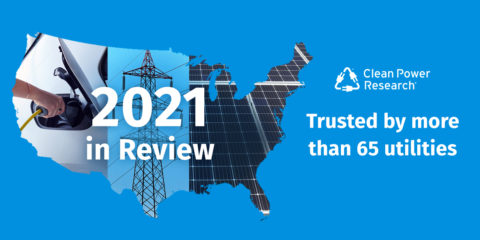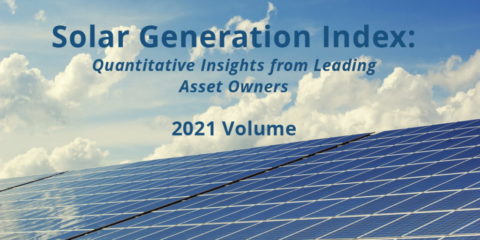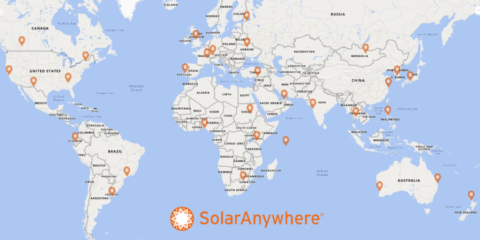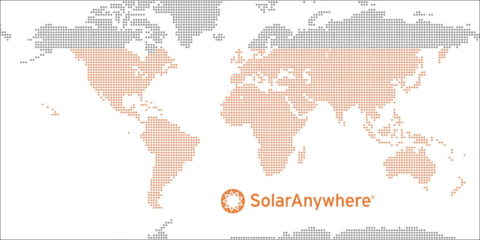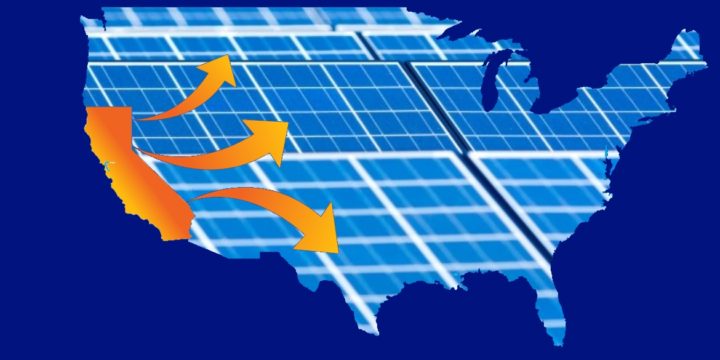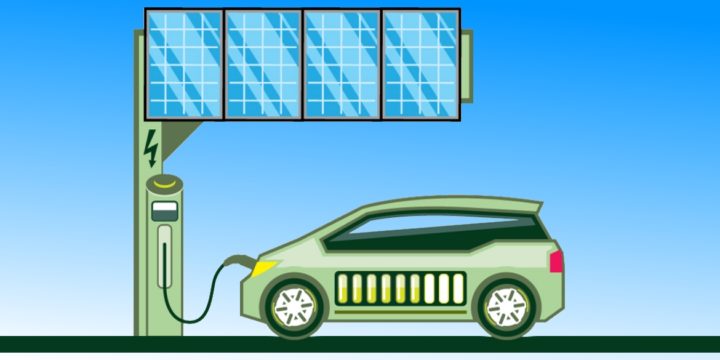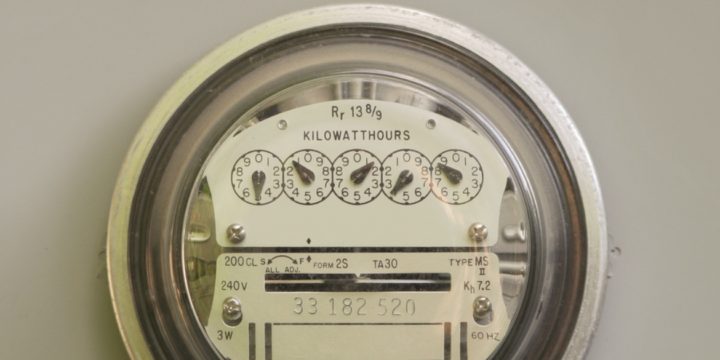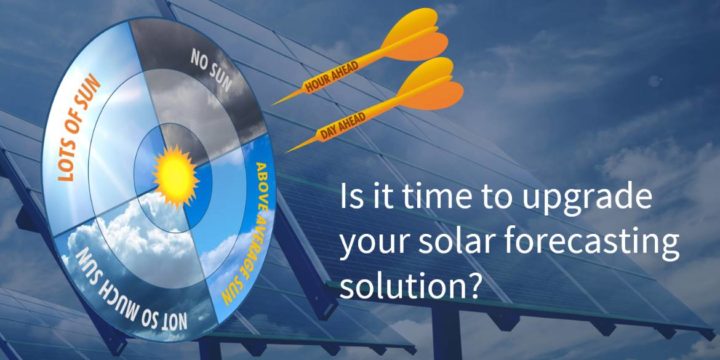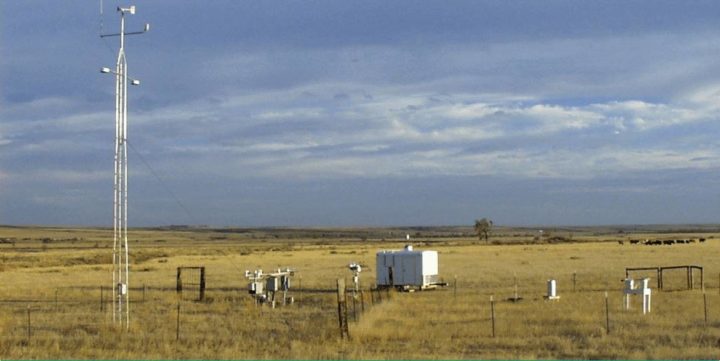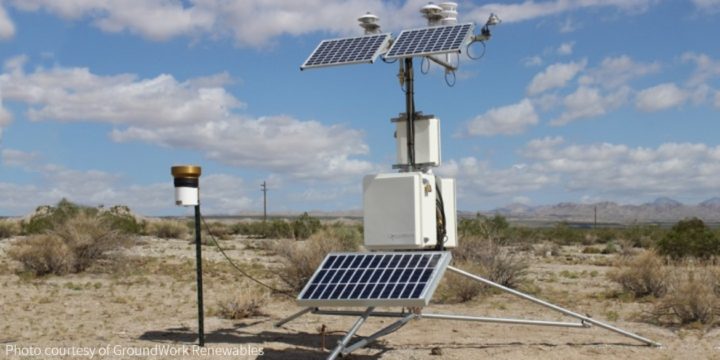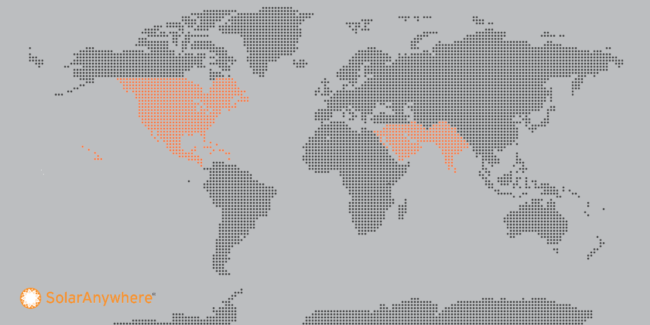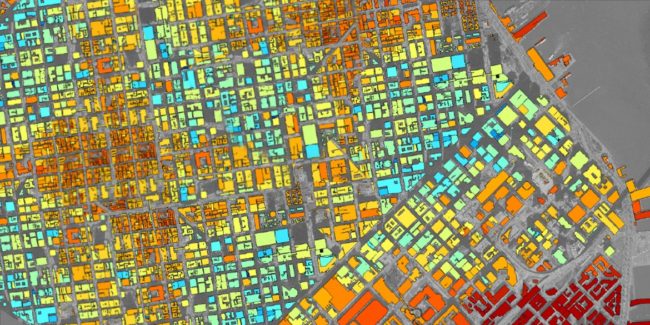No Results Found
The page you requested could not be found. Try refining your search, or use the navigation above to locate the post.
No Results Found
The page you requested could not be found. Try refining your search, or use the navigation above to locate the post.
Estimate PV soiling losses to reduce solar risk with SolarAnywhere
PV soiling losses can increase the levelized cost of electricity (LCOE) of solar power plants by as much as one cent per kWh, depending on the project site. With the average LCOE of solar generation expected to decrease to 1-5 cents/kWh globally by the year 2050, the...
More than 65 utilities trust Clean Power Research to accelerate their energy transformation
In 2019, Clean Power Research reached a milestone when we reported that all Top 10 U.S. utilities relied on one or more of our products to support their energy transformation efforts. In 2021, we witnessed a step change by our utility customers as the tempo of the...
kWh Analytics’ 2021 Solar Generation Index: Real-world data, collaboration needed to inform financial decisions and improve certainty in returns
As solar becomes a more attractive investment, transaction speed often takes precedence over accuracy, which can lead to market inefficiencies. In the 2021 Solar Generation Index report, kWh Analytics is supplying transparency to the solar industry with a performance...
Introducing SolarAnywhere® hindcast data: optimize PV plant design to deliver firm solar power
The solar market is maturing and off-takers are increasingly asking for clean, guaranteed power production regardless of the weather. This trend towards firm solar power delivery is visible in corporate commitments to operate on carbon-free energy 24/7, 365 days a...
PV innovation gets a boost with new SolarAnywhere Public: Current, complete, no-cost solar data for select locations
Solar PV is poised to become the new “king of electricity generation” according to the International Energy Agency (IEA), which predicts solar to lead the surge in renewable power supply over the next decade. Across the U.S. alone, solar is expected to account for 40%...
Clean Power Research offers pvlib models via SolarAnywhere; joins pvlib open-source community
With the rapid growth of solar PV around the world, project developers, owners and operators need efficient and robust solutions to help them develop, operate and maintain PV systems at scale. Programmatic access to solar energy simulations helps stakeholders make...
SunCast podcast: Industry experts discuss the past, present and future of solar project financing
In the SunCast podcast “The Value of Data on Solar Project Finance,” I joined Nico Johnson, the podcast host, Heidi Larson from ICF, and Hoa Shen from kWh Analytics in a discussion about the past, present and future of solar project financing. The conversation focused...
Leveraging utility trusted advisor status to drive EV growth and grid reliability
The electric vehicle (EV) market continues to sizzle across the country, setting a record for quarterly sales in Q1 and Q2 of 2021. Through April 2021, EV sales were up 130 percent over 2020, and exceeded 2019 sales by 75 percent. Utilities have recognized the...
SolarAnywhere® Data coverage goes global with added support for East Asia and Oceania
SolarAnywhere®, the industry’s leading solar data and intelligence service, now offers solar data services in East Asia and Oceania, including Australia and New Zealand. With the addition of this region, SolarAnywhere now provides full global coverage, including...
Solar incentives start strong in 2013
Ringing in a new year generally means a busy time for our PowerClerk® Incentives customers, as it often coincides with the opening of new incentive funding. 2013 has been no exception. In January, Imperial Irrigation District (IID) in California, and Rocky Mountain...
LADWP doubles solar generation capacity with streamlined incentive processing
The Los Angeles Department of Water & Power (LADWP) – the nation’s largest municipal utility – processed 400% more solar incentives in the 2011-2012 fiscal year after implementing a new, more efficient program management solution from Black & Veatch and Clean...
Accolades for Austin Energy’s Value of Solar tariff continue
Austin Energy’s innovative approach to compensating distributed solar owners is continuing to receive accolades across the country. In September, Austin Energy received an Innovation Award from the Interstate Renewable Energy Council (IREC). Earlier in the year Austin...
Gearing up for Solar Power International (SPI) 2012 in Orlando
SPI is next week in Orlando! Six of us will be there from our Kirkland, WA and Napa, CA offices. If you’re attending, please stop by Clean Power Research at booth #4058, right next to the “Energy Networking Station” in Hall B. Areas of emphasis for Clean...
The solar value proposition part 2: Charting a new path using data and analytics
In Part 1 in our series on the solar value proposition, we looked at a new approach to valuing PV. With this new approach, there is a need to quantify deferred and avoided generation, as well as transmission and distribution capacity increases through peak-load...
The solar value proposition part 1: A fork in the road
Much like Kermit the Frog and Fozzie the Bear passing a fork in the road , the explosive growth of solar has many in and around the solar industry exclaiming in Kermit-like fashion, "I don't believe it." No longer is solar relegated to being the energy option when no...
2014 solar trends episode 3: Solar Financing – A New Hope
Financing has been with solar since its earliest days. Before the lease and the power purchase agreement (PPA), residential solar customers would often purchase systems with cash. Cash payments are a form of financing, as the customer is choosing to purchase a solar...
Flexibility meets reliability: PVWatts and NSRDB now available through Clean Power Research API services
In keeping with our mission of powering intelligent energy decisions, Clean Power Research is introducing a 10 km Typical Meteorological Year (TMY) dataset for use in Clean Power Research API services. Programmatic access to this high-resolution dataset and the...
Growing solar beyond California: financial intelligence for every state
Solar is rapidly growing beyond California. As described in the Men’s Journal article “Why Now Is the Time To Go Solar,” this growth is being driven by the availability of inexpensive panels, tax breaks, and options to lease or buy PV systems. While a recent...
Georgia blazing new trails with its value-based FiT
California and New Jersey are known for solar policy innovation, while the states of the Southeast have tended to stay on the sidelines despite having abundant sunshine. Until now, that is. Georgia is quickly emerging as a solar power innovator. Over the past 12...
USC 2013 insights: illuminating key utility solar issues
The Solar Electric Power Association (SEPA) Utility Solar Conference (USC) was held last month in Portland, Ore. This was convenient for our Kirkland, Wash., software team, so we sent four people down to join Tom Hoff from our Napa, Calif., office at the event. It was...
Electric vehicles + solar: an idea whose time has come
You’ve likely heard about the partnerships springing up between electric vehicle (EV) manufacturers and solar (PV) system providers. Most recently, Honda and SolarCity announced a plan that allows Honda customers to install solar with a low upfront cost and see an...
Top 2013 trends part 2: the NEM debate
Last week we identified the first of three big trends for the solar industry in 2013: soft cost reduction. This week, we look at the next big trend: a re-evaluation of net energy metering (NEM). While discussions about NEM aren’t new, they’ll be accelerating in 2013....
MN Solar Pathways: Illuminating pathways to 10% solar
On March 30, 2017, the Minnesota Department of Commerce along with its core team, kicked off its Department of Energy-funded MN Solar Pathways project aimed at finding the least-risk, best-value solutions for MN to achieve its solar energy goals. Clean Power Research...
What is the value of accurate solar forecasting for utility-scale PV plants?
The importance and source of solar forecasting With an increasing number of installed utility-scale PV plants and a growing need for predictable energy generation, the solar industry has started paying attention to solar forecasting. The reasons behind this are: Solar...
SolarAnywhere detects calibration error in nation’s most trusted ground site
How accurate are SolarAnywhere® irradiance data? They are accurate enough to identify an undetected calibration error at one of the nation’s most trusted ground truth stations. Figure 1 presents Direct Normal Irradiance (DNI) and Global Horizontal Irradiance (GHI)...
How to reduce demand charges using solar forecasts
The challenge is well-known by commercial building owners and PV project developers: on site solar PV generation offers excellent energy savings to commercial customers, but can result in unreliable demand charge reduction benefits. Through a recent DOE funded...
The Future of the NREL Solar Prospector and Public Solar Data
Solar Prospector Sunsetting As many of you have heard, the National Renewable Energy Laboratory (NREL) will be sunsetting the Solar Prospector tool. The Solar Prospector tool was last updated in 2012 by NREL, and its purpose was to provide mapping and data analysis in...
Observational MET programs reduce uncertainty
This week, we're pleased to present a post from GroundWork® Renewables' CEO Ann Gaglioti. Measuring irradiance data in the field reduces the uncertainty of the energy production assessment and results in a measurable return on investment during project financing. In...
Quantifying day-ahead solar energy forecast uncertainty
Solar resource variability is an unavoidable natural characteristic that impacts solar power forecasting. However, its impact on forecast uncertainty can be reduced by providing information on predictive uncertainty, along with deterministic forecast values. Having...
Version control: Your bankable signpost in a digital world
If you own an iPhone, you’ve seen the familiar message “iOS 9.3.3 is available for your iPhone and is ready to install.” If you’re like me, you hit “Remind me later” a few dozen times before you actually install the update. Call me paranoid, but I always have to take...
Producing perfect PV fleet forecasts – at what cost?
In our last blog, we talked about the performance of SolarAnywhere® v4 PV fleet forecasts, and discussed how accuracy was a function of the PV fleet’s geographic footprint. For instance, SolarAnywhere hour-ahead forecasts in the Western U.S. were shown to have a...
No Results Found
The page you requested could not be found. Try refining your search, or use the navigation above to locate the post.
No Results Found
The page you requested could not be found. Try refining your search, or use the navigation above to locate the post.
PowerClerk®: The proven solution for more than one million DER applications
The past two years have seen key milestones for distributed energy resource (DER) adoption in the U.S., including: Passing one million total residential solar installations in 2017. All solar generation (including residential, commercial and utility scale) in 2018...
Make the most of your DER interconnection data: virtual metering
In a previous blog post, we detailed the responsibility of distributed energy resource (DER) interconnection managers to capture DER system specifications for their system planners and distribution engineers. Since then, even more U.S. utilities have turned to...
Higher-resolution data and broader geographic access with new SolarAnywhere Data license options
Thanks to our subscribers, partners and hard-working development team, SolarAnywhere® has become the most trusted and vetted solar resource dataset available. In 2017 alone, the SolarAnywhere team: Topped an EPRI study for forecasting Spotted a calibration issue at...
The future of solar forecasting with the new GOES-16 satellite
The SolarAnywhere® team transforms satellite images into industry-leading solar irradiance data. We make algorithms, not satellites, so when NOAA/NASA upgrades the hardware, we take notice of the possibilities—and get to work. On January 2, 2018 we made a seamless...
Why WattPlan Grid: Planning for DER adoption
Eight months ago, Clean Power Research and the Sacramento Municipal Utility District (SMUD) formed a unique partnership to solve the critical challenge of planning for DER adoption. In the words of our partners at SMUD, this new DER planning software—called WattPlan®...
SolarAnywhere FleetView Forecasts Top EPRI Study
The Electric Power Research Institute (EPRI) recently completed a solar forecasting trial designed to help utilities understand the value that accurate solar prediction can bring to their energy market schedules and balancing operations. SolarAnywhere® FleetView®...
The August 21st solar eclipse: How and where it’ll impact solar production
On August 21, 2017, the U.S. will experience a solar eclipse for the first time since May 2012. The eclipse will cause an obscuration of the sun’s light, resulting in a reduction of the energy from irradiance that will hit the Earth’s surface. As the eclipse crosses...
How Orange and Rockland Utilities reduced interconnection application errors by 95%
PowerClerk: The DER interconnection control center In September 2016, we released an important new integration capability that enables utilities to use PowerClerk® to create their own distributed energy resource (DER) interconnection control center. By using web...
MN Solar Pathways: Illuminating pathways to 10% solar
On March 30, 2017, the Minnesota Department of Commerce along with its core team, kicked off its Department of Energy-funded MN Solar Pathways project aimed at finding the least-risk, best-value solutions for MN to achieve its solar energy goals. Clean Power Research...

